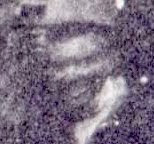
Archaeologists comb newly-found Civil War POW camp
By RUSS BYNUM
Associated Press
SAVANNAH, Ga. (AP) — When word reached Camp Lawton that the enemy army of Gen. William T. Sherman was approaching, the prison camp's Confederate officers rounded up their thousands of Union army POWs for a swift evacuation — leaving behind rings, buckles, coins and other keepsakes that would remain undisturbed for nearly 150 years.
Archaeologists are still discovering unusual, and sometimes stunningly personal, artifacts a year after state officials revealed that a graduate student had pinpointed the location of the massive but short-lived Civil War camp in southeast Georgia.
Discoveries made as recently as a few weeks ago were being displayed Thursday at the Statesboro campus of Georgia Southern University. They include a soldier's copper ring bearing the insignia of the Union army's 3rd Corps, which fought bloody battles at Gettysburg and Manassas, and a payment token stamped with the still-legible name of a grocery store in Michigan.
"These guys were rousted out in the middle of the night and loaded onto trains, so they didn't have time to load all this stuff up," said David Crass, an archaeologist who serves as director of Georgia's Historic Preservation Division. "Pretty much all they had got left behind. You don't see these sites often in archaeology."
Camp Lawton's obscurity helped it remain undisturbed all these years. Built about 50 miles south of Augusta, the Confederate camp imprisoned about 10,000 Union soldiers after it opened in October 1864 to replace the infamous Andersonville prison. But it lasted barely six weeks before Sherman's army arrived and burned it during his march from Atlanta to Savannah.
Barely a footnote in the war's history, Camp Lawton was a low priority among scholars. Its exact location was never verified. While known to be near Magnolia Springs State Park, archaeologists figured the camp was too short-lived to yield real historical treasures.
That changed last year when Georgia Southern archaeology student Kevin Chapman seized on an offer by the state Department of Natural Resources to pursue his master's thesis by looking for evidence of Camp Lawton's stockade walls on the park grounds.
Chapman ended up stunning the pros, uncovering much more than the remains of the stockade's 15-foot pine posts. On neighboring land owned by the U.S. Fish and Wildlife Service, he dug up remnants of the prisoners themselves — a corroded tourniquet buckle, a tobacco pipe with teeth marks in the stem and a folded frame that once held a daguerreotype.
"They're not just buttons and bullets," Chapman said. "They're little pieces of the story, and this is not the story of battles and generals. This is the story of little people whose names have been forgotten by history that we're starting to piece together and be able to tell."
A year later, Chapman says he and fellow archaeology students working at Camp Lawton have still barely scratched the surface. In July, they used a metal detector to sweep two narrow strips about 240 yards long in the area where they believe prisoners lived.
They found a diamond-shaped 3rd Corps badge that came from a Union soldier's uniform. Nearby was the ring with the same insignia soldered onto it.
The artifacts also yield clues to what parts of the country the POWs came from, including the token issued by a grocery store in Niles, Mich., that customers could use like cash to buy food. Stamped on its face was the merchant's name: G.A. Colbey and Co. Wholesale Groceries and Bakery.
Similarly, there's a buckle that likely clasped a pair of suspenders bearing the name of Nanawanuck Manufacturing Company in Massachusetts.
Hooks and buckles that appear to have come off a Union knapsack also hint that, despite harsh living conditions, captors probably allowed their Union prisoners to keep essentials like canteens and bedrolls.
The Georgia Southern University Museum plans to add the new artifacts to its public collection from Camp Lawton in October along with a related acquisition — a letter written by one of the camp's prisoners on Nov. 14, 1864, just eight days before Lawton was abandoned and prisoners were taken back to Andersonville and other POW camps.
The letter written by Charles H. Knox of Schroon Lake, N.Y., a Union corporal in the 1st Connecticut Cavalry, was purchased from a Civil War collector in Tennessee. Unaware that Camp Lawton will soon be evacuated, Knox writes to his wife that he hopes to soon be freed in a prisoner exchange between the warring armies.
He doesn't write much about conditions at the prison camp, but rather worries about his family. He tells his wife that if she and their young son need money for food or clothing, there's a man who owes him $9. Knox also gives his wife permission to sell the family's cow.
Brent Tharp, director of the campus museum, said his growing collection from Camp Lawton has definitely drawn Civil War buffs to visit from far beyond southeast Georgia.
"The people who are real Civil War buffs and fanatics, those are definitely coming," Tharp said. "But I think we've also created a whole new group of Civil War buffs here because it's right here in their own backyard."


No comments:
Post a Comment